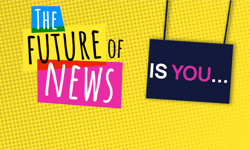When you opened your Christmas stocking, many of you are likely to have received a CD or DVD bought by friends and family on the high street or, increasingly, online. If, however, your presents have sparked a sudden revival interest in obscure folk collections or old classics, there is another way to build your library.
In the months of October and November 2005, any diligent newspaper reader could have picked up a stocking-full of free entertainment products, including a 5-track Franz Ferdinand CD from the Observer, Van Morrison from the Sun, the Lion King storyteller CD from the Times and the Best of Jasper Carrot from the People.
While this is obviously good news for the consumer, there are questions concerning its sustainability.
The early covermounts
It’s hard to pin down where the phenomenon started. Back in the 1970s, music magazines were giving away 7" discs. Future Publishing also can claim some recognition for introducing the CD-ROM covermount, containing computer software, to their PC titles. In both of these cases, there was a close correlation between the covermount and the underlying printed product.
However, the introduction of covermount music CDs on newspapers didn’t really arrive until the early 2000s and heralded a new dawn – one in which the giveaway was truly that – a gift for the reader, unrelated to the content of the newspaper.
It’s now grown to such a proportion that giveaways outnumber retail sales of DVDs by over 3 to 1. And it has become the drug on which the national newspaper market has become hooked.
So, who really benefits?
Well, at one level, everyone. The benefit for the purchaser is clearest – a free collection of music or video content, albeit in most cases content that one would not otherwise have bought, but which nonetheless augments the home media library.
For the publisher, covermount CDs and DVDs bring in extra sales. Significantly, they are good at creating sales spikes and attracting the floating reader. They have also been successful at driving cross sales of weekend newspapers where part 1 can be picked up on a Saturday and part 2 on Sunday, thus increasing sales on both days from individuals that would otherwise have purchased on only one.
For the label or artist, the covermount can drive two sources of revenue. First, a giveaway of selected tracks is a great teaser to support the release of a new album, especially if it can be teamed with editorial coverage in the paper. Secondly, and perhaps more importantly, most covermount CDs are just re-releases of back catalogues. On their own, it is unlikely that anyone would seek out a copy of these old tracks to buy, but compiled and given away free, they bring in a few more pence per copy for the rights holder.
However, several factors lead to a critical questioning of the sustainability of this trend.
1. Are the extra readers who buy the paper on covermount days sticking around? Evidence suggests not – in contrast, there is a pool of promiscuous floating readers who buy whichever paper they feel has the best covermount on any particular day. Worse still, for the industry as a whole, this group have no real interest in newspapers themselves and sales disappear on days when there are no covermounts.
2. From a financial perspective, the economics initially appear quite attractive. According to some estimates, the DVD production costs, including rights costs, can be as little as 15p per copy. Set against a marginal revenue of say 30p per copy (wholesale price less newsprint and distribution), this seems good value. The challenge, of course, is that it is impossible to restrict giving the covermounts to new purchasers only. Thus, you have to give one to all of your readers, the vast majority of whom would have bought the paper anyway. Looked at in this way, the economics suddenly seem quite poor (see example).
| The economics of covermounts – an example Assume a newspaper with a circulation of 2 million can achieve a 5% (100,000) sales uplift through carrying a covermount CD. * Total costs of the giveaway will equal 2m x 15p = £300,000 * Total marginal benefit = 100,000 new sales (uplifts) Cost per uplift = £3 – significantly greater than the 30p each extra sale may be worth! |
3. A number of content owners – largely big labels – have indicated their dissatisfaction with the covermount trend. There has also been some negative comment from big music and video retailers.
In one survey (FiveEight’s Covermount Report by Helen Doyle) of 46 record labels, a key finding was that covermounts do not meet the objectives of participating labels. 60% of respondents reported that sales did not increase following covermount campaigns and 35% reported that sales increased by less than 5% following covermount campaigns.
Universal Music and EMI have both publicly stated that they wish to restrict the depth of their content that they are prepared to make available for covermounts and HMV’s Gennaro Castaldo was quoted at the time saying "There has been a noticeable impact on compilation sales ... Universal and EMI have responded to lobbying from retailers and the managers who represent the artists."
Clearly, the lack of benefit to the label or retailer varies in relation to the nature of the content and whether or not it is truly competing for share of wallet. Nonetheless, it is undeniable that the music and video industry is increasingly uncomfortable about the covermount trend.
4. Will consumer interest wane? For many people, the covermount CD is an opportunity to get a specific track. However, this is sandwiched within 20 others, few of which are wanted. In the age of the internet download, where individual tracks can be ordered for 79p and delivered straight to your ipod, what incentive is there to get 19 tracks you don’t want? Additionally, if the big labels increasingly pull back from supporting covermounts, the reduced range of content on offer will be a further detractor for the reader.
5. Perhaps most worrying for true newspaper lovers is that the endless drive to compete with each other in the covermount stakes must be detracting from the underlying paper. The worst possible outcome is that readers value the giveaway more than the newspaper, treating the latter as no more than a distribution vehicle to be jettisoned at the earliest opportunity. Where does that leave the newspaper and, most importantly, will genuine readers be unsatisfied when this fad does inevitably end?
Lessons learnt from other industries may provide some insight into how the trend for covermounts will end. It is likely to be in one of two ways: one of the newspaper publishers will break rank, or the readers will get bored. Two analogous cases spring to mind:
* The 0% credit card offer. Having spent the past three or so years tempting customers away from each other with 0% balance transfer offers, the credit card industry finally realised that all that was happening was that ‘rate tarts’ were constantly moving every 6 months. Thus, with the only winner being the consumer, Nationwide Bank broke tradition and introduced transfer fees to offset some of the cost. Having set the stage, most of the other card issuers jumped ship too and today it is difficult to find a truly 0% balance transfer offer.
* Petrol station giveaways. Talk to any motorist of the 1980s and they will remember the collectible tokens that petrol stations gave out to encourage repeat business. These tokens could be exchanged for collections of weird, wonderful and largely useless household items. However, this fad too passed away as customers began to realise that they did not really want these gifts.
Secretly, all newspaper marketers know that the covermount craze has to stop. Even newspaper proprietors have become vocal about it:
"I hate this DVD craze. The sales go up for a day. And are right back to where they were the following day ... That's got to stop." (Rupert Murdoch, Chairman and CEO News Corporation, Press Gazette, 2005.)
"When will everybody finally realise that this is not adding permanent value to Fleet Street? Somebody will have to go first." (Charles Sinclair, CEO DMGT, 2005)
2006 is likely to see the end of the CD/DVD covermount as we currently know it. The unknown is whether they will be replaced and by what.
In the famous words of Abba – Thank you for the music…










